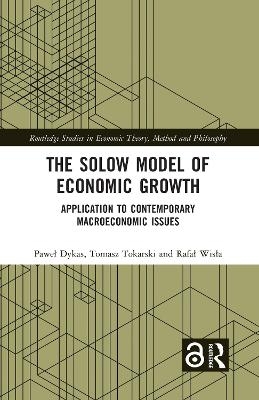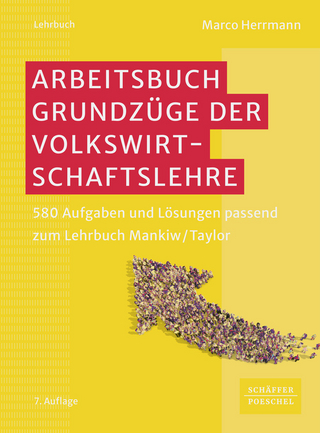
The Solow Model of Economic Growth
Routledge (Verlag)
978-1-032-34777-6 (ISBN)
The book identifies six spheres of interest in modern macroeconomic theory: the impact of fiscal and monetary policy on growth; the effect of different returns to scale on production; the influence of mobility of factors of production among different countries on their development; the effect of population dynamics on growth; the periodicity of investment rates and their influence on growth; and the effect of exogenous shocks in the form of an epidemic. For each of these issues, the authors construct and analyze an appropriate growth model that focuses on the description of the specific macroeconomic problem.
This book not only continues the neoclassical tradition of thought in economics focused on quantitative economic change but also, and to a significant extent, discusses alternative approaches to certain questions of economic growth, utilizing conclusions that can be drawn from the Solow model. It is a useful tool in analyzing contemporary issues related to growth.
Paweł Dykas is Associate Professor at the Department of Mathematical Economics of the Jagiellonian University, Krakow, Poland. Tomasz Tokarski is Full Professor of Economics at the Department of Mathematical Economics of the Jagiellonian University, Krakow, Poland. Rafał Wisła is Professor of Economics at the Department of Economics and Innovation of the Jagiellonian University, Krakow, Poland.
Introduction 1. R. M. Solow's inspirations 2. The Solow model 3. Generalizations of the Solow model (the Mankiw-Romer-Weil and Nonneman-Vanhoudt models) 4. Fiscal and monetary policy vs economic growth 5. Economic growth at returns to scale conditions 6. Bipolar growth models with investment flows 7. The gravity model of economic growth 8. Solow equilibrium at alternative trajectories of the number of workers 9. The Solow equilibrium at sine-wave investment rates 10. SIR-Solow Model
| Erscheinungsdatum | 14.10.2022 |
|---|---|
| Reihe/Serie | Routledge Studies in Economic Theory, Method and Philosophy |
| Zusatzinfo | 31 Line drawings, black and white; 31 Illustrations, black and white |
| Verlagsort | London |
| Sprache | englisch |
| Maße | 156 x 234 mm |
| Gewicht | 453 g |
| Themenwelt | Wirtschaft ► Volkswirtschaftslehre ► Makroökonomie |
| Wirtschaft ► Volkswirtschaftslehre ► Ökonometrie | |
| Wirtschaft ► Volkswirtschaftslehre ► Wirtschaftspolitik | |
| ISBN-10 | 1-032-34777-5 / 1032347775 |
| ISBN-13 | 978-1-032-34777-6 / 9781032347776 |
| Zustand | Neuware |
| Informationen gemäß Produktsicherheitsverordnung (GPSR) | |
| Haben Sie eine Frage zum Produkt? |
aus dem Bereich


